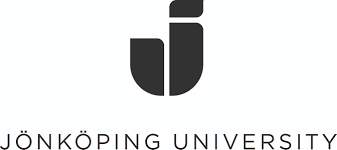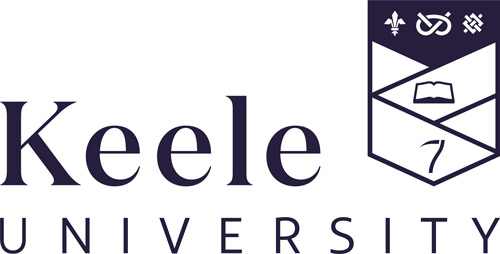Prosthetics and Orthotics: Empowering Mobility Worldwide
Are you passionate about healthcare, engineering, and making a real difference in people's lives? Studying Prosthetics and Orthotics abroad could be your gateway to a rewarding career in rehabilitation sciences. This specialized field focuses on designing, fitting, and maintaining prosthetic limbs (for amputees) and orthotic devices (braces and supports for musculoskeletal issues). For Indian students, pursuing this course internationally offers access to cutting-edge technology, global standards, and diverse clinical experiences that are often limited in India.
With India's growing healthcare sector and an increasing need for rehabilitation experts due to rising accident rates and chronic conditions, graduates in this field are in high demand. Studying abroad equips you with internationally recognized qualifications, opening doors to opportunities both in India and globally. Let's dive into everything you need to know about this dynamic course.
Course Overview
The Prosthetics and Orthotics program is typically a postgraduate or undergraduate degree, blending biomedical engineering, anatomy, and patient care. It prepares you to assess patients, create custom devices, and provide ongoing support to improve mobility and quality of life.
Duration and Structure
- Undergraduate Programs: Bachelor's degrees usually last 3-4 years, including foundational sciences like biology, physics, and engineering.
- Postgraduate Programs: Master's degrees (MSc or MPO) span 1-2 years, focusing on advanced clinical practice and research.
- Integrated Programs: Some universities offer combined BSc/MSc paths over 4-5 years.
The curriculum is hands-on, with classroom learning, lab simulations, and clinical placements. Expect to cover topics like biomechanics, material science, gait analysis, and ethical considerations in prosthetics.
Core Modules
| Module | Description |
|---|---|
| Anatomy and Physiology | Understanding the human musculoskeletal system to design effective devices. |
| Prosthetic Design and Fabrication | Learning to create artificial limbs using 3D printing, CAD software, and traditional methods. |
| Orthotic Principles | Focus on braces for conditions like scoliosis or post-stroke recovery. |
| Clinical Practice and Rehabilitation | Hands-on training in patient assessment, fitting, and therapy integration. |
| Research and Innovation | Exploring emerging tech like bionic limbs and AI-driven orthotics. |
Many programs include internships at leading hospitals or rehab centers, giving you practical exposure to real-world cases, from sports injuries to war-related amputations.
Why Study Prosthetics and Orthotics Abroad?
For Indian students, studying abroad in this field means exposure to advanced facilities and multicultural patient care. Countries like the UK, USA, Australia, and Canada lead in rehabilitation tech, with innovations like myoelectric prosthetics (controlled by muscle signals) originating there.
- Global Standards: Degrees from accredited bodies like the International Society for Prosthetics and Orthotics (ISPO) ensure your qualification is valid worldwide.
- Research Opportunities: Access to state-of-the-art labs and collaborations with organizations like the WHO.
- Cultural Diversity: Work with patients from varied backgrounds, enhancing your empathy and adaptability—skills vital in India's diverse population.
- Post-Study Work Visas: Many countries offer 1-3 years of work experience post-graduation, helping you build a global resume.
Back in India, you'll be ahead of the curve, as the field is still developing. Institutions like AIIMS and private chains like Apollo Hospitals seek certified prosthetists/orthotists.
Top Destinations and Universities for Indian Students
Choosing the right country depends on cost, visa ease, and career goals. Here's a breakdown:
United Kingdom
The UK is a top choice for its short programs and NHS exposure. Tuition: £15,000-£25,000/year. Popular universities:
- University of Strathclyde (Glasgow): Renowned MSc in Prosthetics & Orthotics; strong industry links.
- University of Salford: BSc (Hons) in Prosthetics and Orthotics; includes clinical placements.
Visa: Student route with part-time work allowed. Indian students benefit from scholarships like Chevening.
United States
USA offers diverse programs with high-tech focus. Tuition: $20,000-$50,000/year. Key institutions:
- Northwestern University (Chicago): MS in Prosthetics-Orthotics; ABC-certified.
- University of Washington (Seattle): Residency programs for advanced training.
OPT visa allows up to 3 years of work. GRE/TOEFL required; scholarships via Fulbright for Indians.
Australia
Affordable living and post-study work (2-4 years). Tuition: AUD 30,000-45,000/year. Highlights:
- La Trobe University (Melbourne): Bachelor of Prosthetics and Orthotics; ISPO-accredited.
- University of Sydney: Postgraduate options with research emphasis.
Subclass 500 visa; Indian students can apply for Australia Awards scholarships.
Canada
Multicultural and research-driven. Tuition: CAD 20,000-35,000/year. Top picks:
- University of British Columbia (Vancouver): MSc in Rehabilitation Sciences with orthotics focus.
- McGill University (Montreal): Integrated programs in biomedical engineering.
PGWP for up to 3 years work. Affordable compared to USA; Vanier scholarships available for Indians.
Pro Tip: Check ISPO Category I status for programs to ensure international recognition.
Eligibility and Entry Requirements
Indian students typically need:
- Academic Qualifications: For undergrad: 10+2 with Physics, Chemistry, Biology/Maths (60%+). For postgrad: Bachelor's in Engineering, Physiotherapy, or Medicine (55%+ GPA).
- English Proficiency: IELTS 6.5-7.0 or TOEFL 90+; some universities accept Duolingo.
- Entrance Exams: GRE for USA/Canada; no common test for UK/Australia.
- Other: Personal statement, references, and sometimes interviews. Prior healthcare experience is a plus.
Visa requirements include proof of funds (e.g., £12,000 for UK) and health insurance. Start applications 6-12 months in advance.
Career Prospects and Opportunities
Graduates become certified prosthetists/orthotists, working in hospitals, rehab centers, or private clinics. The global market for prosthetics is projected to grow to $10 billion by 2027, driven by aging populations and tech advances.
Job Roles
- Clinical Prosthetist/Orthotist: Fit devices and monitor patient progress.
- Rehabilitation Specialist: Collaborate with physiotherapists for holistic care.
- Researcher/Innovator: Develop next-gen devices at companies like Össur or Ottobock.
- Consultant: Advise on policy or train others in NGOs like the Indian Red Cross.
Salary Expectations
| Country | Entry-Level Salary (Annual) | Experienced Salary (Annual) |
|---|---|---|
| India | ₹4-6 Lakhs | ₹10-20 Lakhs |
| UK | £25,000-£35,000 | £40,000-£60,000 |
| USA | $60,000-$80,000 | $90,000-$120,000 |
| Australia | AUD 70,000-90,000 | AUD 100,000-140,000 |
| Canada | CAD 60,000-80,000 | CAD 90,000-110,000 |
In India, opportunities abound at AIIMS, PGIMER, or startups like Bionik Prosthetics. Abroad study enhances employability, with many returning via India's Skill India initiative.
Scholarships and Financial Aid for Indian Students
Funding is crucial—don't let costs deter you. Options include:
- University Scholarships: Merit-based awards covering 20-50% tuition (e.g., Strathclyde International Excellence).
- Government Schemes: UK's GREAT Scholarships (₹10 Lakhs+), Australia's Endeavour Awards.
- Indian-Specific: Inlaks Shivdasani Foundation (up to $100,000), JN Kennedy Memorial Trust for USA/UK.
- Loans: SBI Global Ed-Vantage or HDFC Credila for abroad studies, with low interest for healthcare fields.
- Part-Time Work: Earn £10-15/hour in UK/Australia to offset living costs (₹8-12 Lakhs/year).
Apply early; many require essays on your motivation for prosthetics/orthotics.
Application Tips and Next Steps
1. Research Thoroughly: Use QS Rankings or ISPO directory for programs.
2. Prepare Documents: Transcripts, SOP highlighting your interest (e.g., inspired by a family member's rehab journey).
3. Seek Guidance: Consult study abroad counselors or platforms like IDP/Edwise for free advice.
4. Network: Join LinkedIn groups like "Indian Prosthetists Abroad" for alumni insights.
5. Plan Finances: Budget for tuition, living (₹10-15 Lakhs/year), and travel.
Studying Prosthetics and Orthotics abroad isn't just an education—it's a commitment to transforming lives. With India's push towards 'Make in India' for medical devices, your expertise will be invaluable. Take the first step today and step into a future of innovation and impact!


